Grand River Park Plant Information
The following is a listing of plants commonly found at Grand River Park the focus is the wetland plants near the parking lot and adjacent paths. Elsewhere in the park are variety of habitats including mature forest, managed grasslands, and mid-succession shrubby areas.
Grand River Park is managed by Ottawa County.
Plants are organized by growth form and phylogenetic grouping as follows:
|
Herbaceous |
|---|
|
Fern |
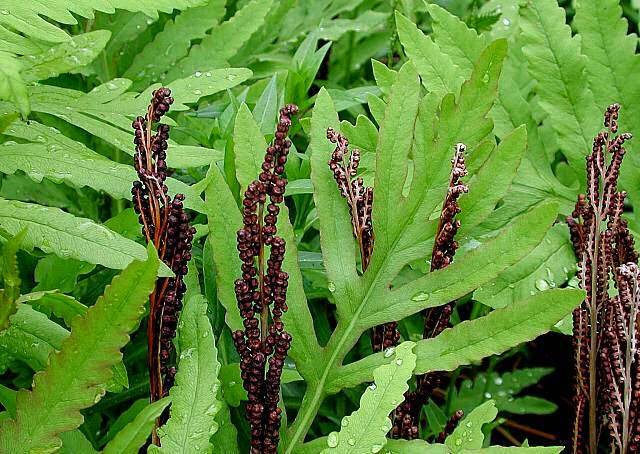
Onoclea (sensibilis) – sensitive fern
Dryopterid-aceae
Medium fern; leaves upright with petioles roughly same length as blades; sterile leaves deciduous and surrounding fertile leaves, once pinnately divided at base, opposite, deeply cleft upward wavy margined or coarsely toothed, ֎with a winged central axis; ֎dimorphic fronds (fertile and sterile leaves appearing distinctly different); fertile leaves contain spore clusters produced in summer and overwinter, leaves divided in beadlike pinnules with in rolled margins covering the sori; sori round and covered by indusia; swampy woods, wet shores, wet meadow margins.
Dicot (Herbaceous)
[1625766381].jpg)
Cicuta sp. – water hemlock
Api-aceae (֎double umbel ֎typically hollow ֎typically toxic ֎often with sheath)
Medium to large herb up to 2m; highly poisonous, handle with caution; from tuberous rootstalk; leaves alternate, ֎2-3 pinnate; leaflets narrow or lanceolate; flowers white or green; fruit round or ovate with pronounced ribs, June-September; wet meadows, marshes, moist soils.
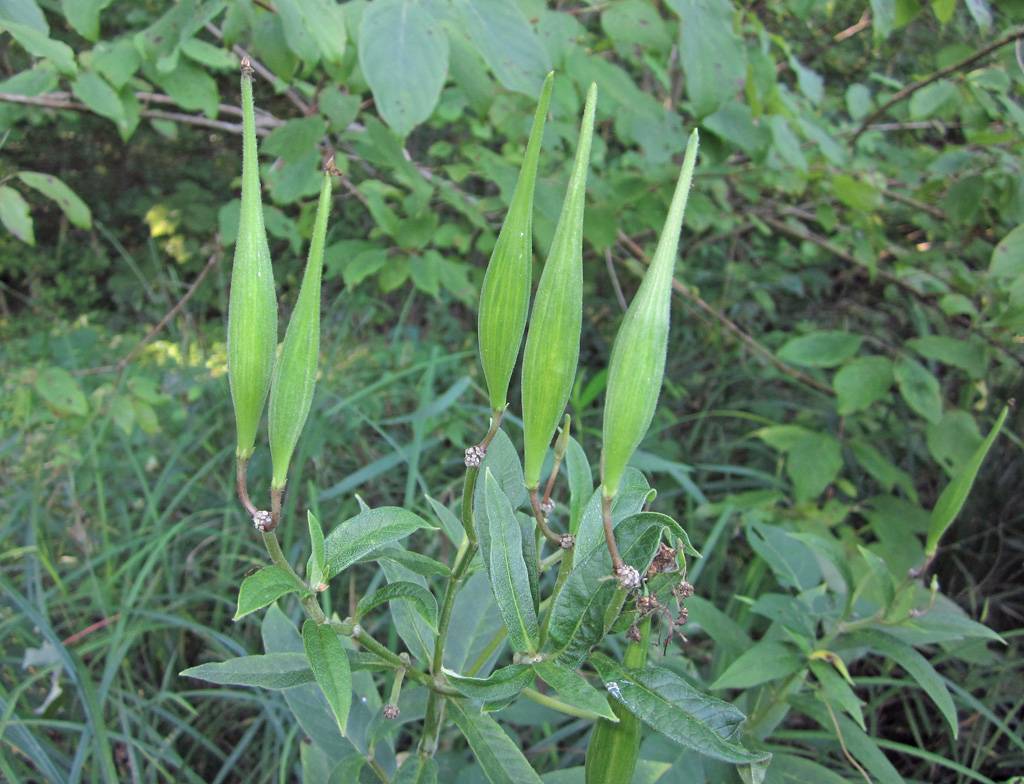
Asclepias incarnata – swamp milkweed
Asclepiad-aceae
Small herb; leaves opposite, narrow, lance-shaped to linear to oblong; smooth; flowers in several umbels, pink; ֎milky juice if broken stems or leaves (characteristic of family); ֎long pointed seed pods; wet meadow and coastal shoreline.
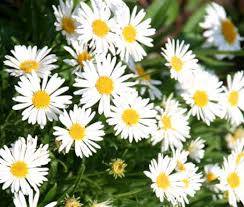
Aster sp. – aster (recently split into Canadanthus, Dellingeria, Durybia, Oclemena, Sericocarpus, Symphyotrichum)
Aster-aceae
Herb; leaves variable but usually lanceolate with a tapering point; ֎flower heads with a yellow disk, rays are blue, purple or white.
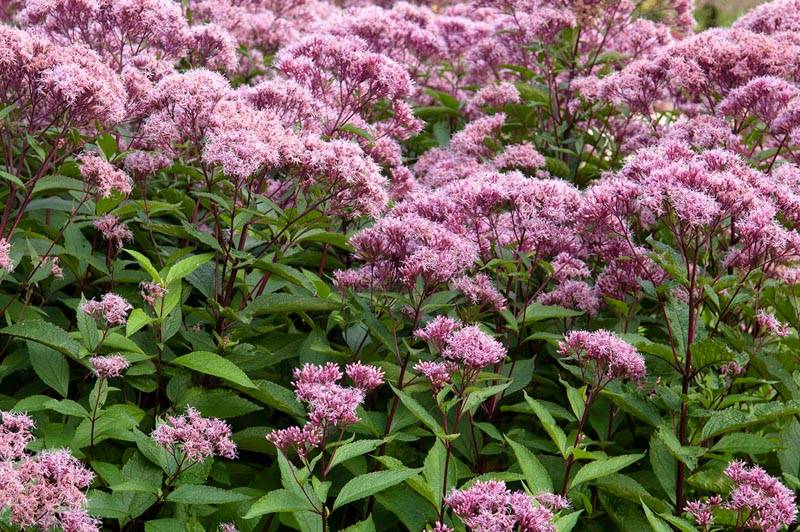
Eupatorium maculatum – joe-pye-weed
Aster-aceae
Large herb up to 1m; stem deep purple or purple spotted, rough and coarse; ֎leaves in whorls, on short petioles, uppermost leaves shorter than the inflorescence, lance-shaped to linear; flower heads in disks, numerous umbels, clustered, flat-topped, pink or purple; shallow marshes, shores, wet meadows, swales.
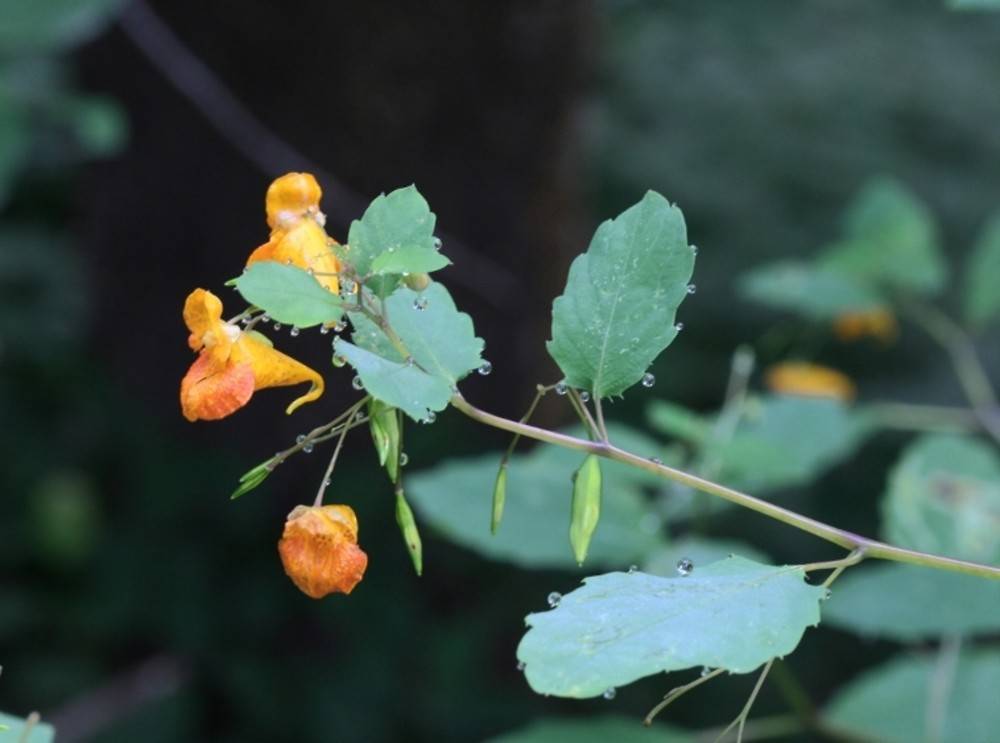
Impatiens capensis – spotted touch-me-not, jewel weed
Balsam-aceae
Medium herb; stems very succulent, ֎nearly translucent and wilt easily; leaves alternate, delicate; flowers with a long ֎spur, dangle on a long stalk. orange, spotted; with ֎‘explosive’ seed pods; moist shady soil, along streams and shallow marsh edges.
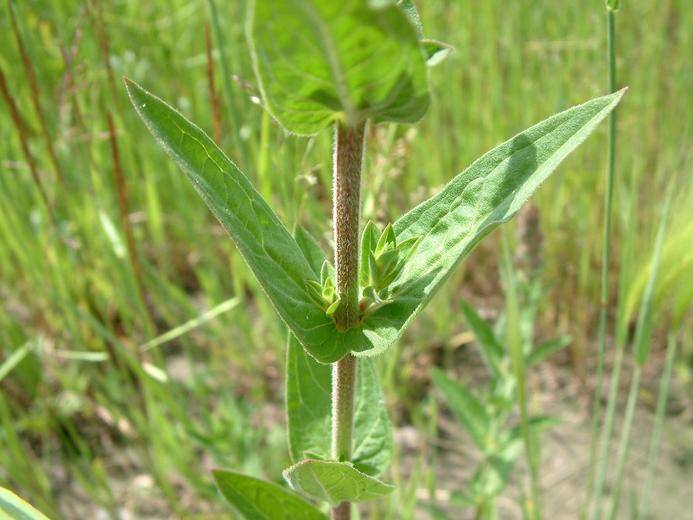
Lythrum salicaria - purple loosestrife
Lythr-aceae
Large herb up to 2.5m; ֎stems angled, slender, not woody (can be woody as they age); ֎leaves mostly opposite (although often also alternate on the same plant), ֎sessile (no petiole), often almost heart-shaped at base; ֎flowers numerous in long purple spikes; many seeded; wet meadow, shores, shallow marsh. This invasive is common throughout West Michigan and originally escaped from cultivation and was planted as a pretty garden plant. If you see only a few, then remove them, but do not kill native loosestrifes.
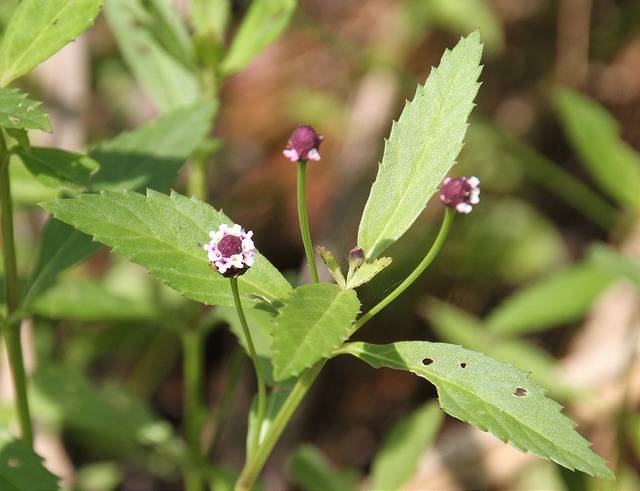
Phyla (lanceolate) – fog-fruit
Verben-aceae
Small herb; leaves opposite, toothed; ֎flowers in round heads or short cylindric spikes ֎on leafless stalks from leaf axis.
Monocot (Herbaceous)
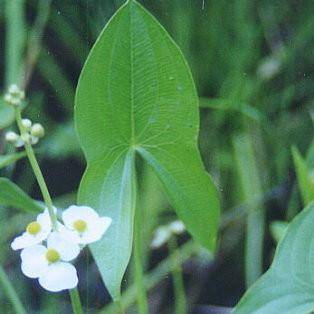
Sagittaria sp. – arrowhead
Alismat-aceae
Aquatic herb; leaves variable ֎arrow-shaped to elliptical (ribbon-like) to lance-shaped, erect extending above the surface, arising from the base which is normally submersed; inflorescence is a raceme or panicle of whorled white flowers with three round-ish petals; fruit are in dense yellowish heads; ponds, shallow marshes, shores. ֎Leaf veins similar to spider-man symbol.
S. latifolia (duck potato, wapato) with edible tubers in spring or fall (deep).

Symplocarpus (foetidus) – skunk cabbage
Ar-aceae
Aquatic herb 1-3’; ֎leaves large, broadly oval on short petiole ֎foetid odor when crushed and leaves appear after the flowers; spathe is sheathing/shell-like, green to purple-brown mottled or striped and envelopes the spadix which contain the stamens and pistils; plants are thermogenic (heat producing) in early spring; swamps, marshes. muddy shores.
Graminoid (Herbaceous monocot)
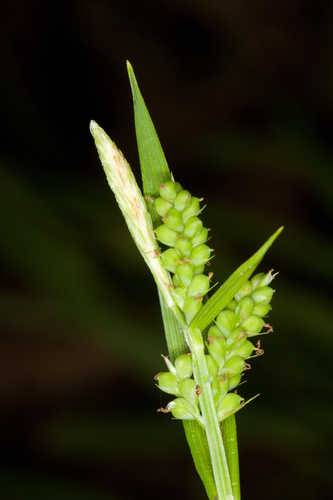
Carex sp. – carex
Cyper-aceae
Extremely diverse sedge; nutlet enclosed in a ֎perigynium (sack-like structure unique to carex); stamens and pistils in separate flowers; staminate and pistillate flowers may be in separate spikes, in different parts of the same spike or scattered and scarcely distinguishable in each spike. The most diverse plant genus with more than 100 species in West Michigan.
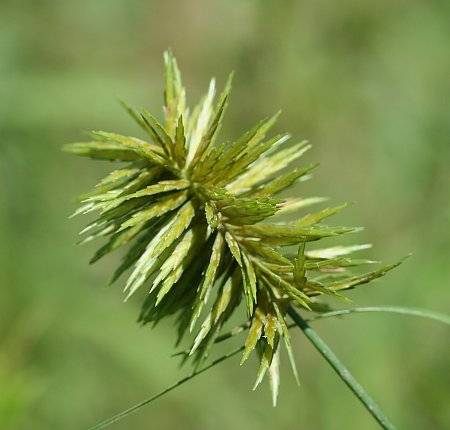
Cyperus sp. – nut grass
Cyper-aceae
Diverse common sedge; spikelets ֎terminal and ֎flattened - scales in 2 rows on opposite sides of the rachilla; rachilla often with thin wings somewhat enclosing the nutlet or running to the scale next above; spikelets often in heads, with leafy bracts at base. More than a dozen species in West Michigan, some are common weeds.
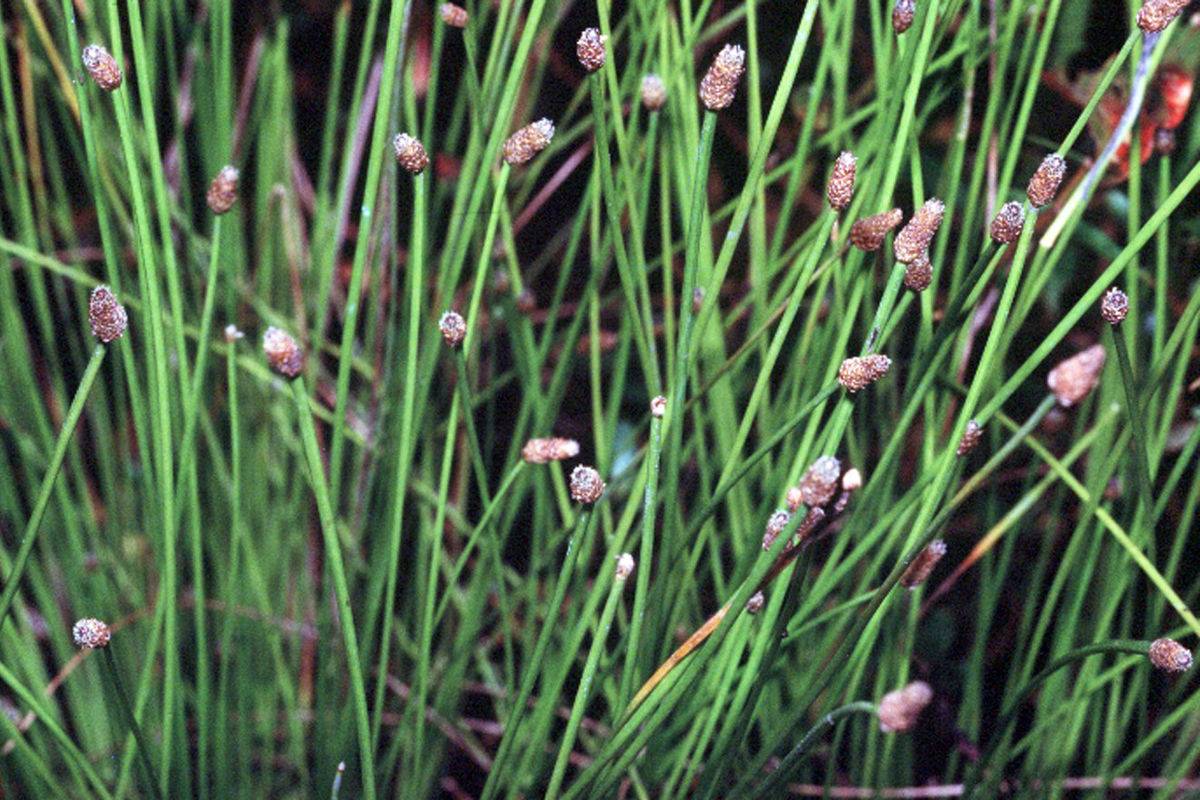
Eleocharis sp. – spike rush
Cyper-aceae
Sedge typically found in shallow water; ֎leaves without blades and represented by sheaths at the base of the stem; flowers on ֎solitary terminal spikelet; flower has subtending scale which hides it from view, arranged spirally on the axis of the spikelet with overlapping scales, the style base of each ovary persists as a ֎tubercle (a cap) on the mature fruit; identification within the genus is impossible unless the fruit (nutlet) is mature because species identification is based on the tubercle characteristics; shallow and deep marshes, ponds, stream-banks, wet meadows, swales.
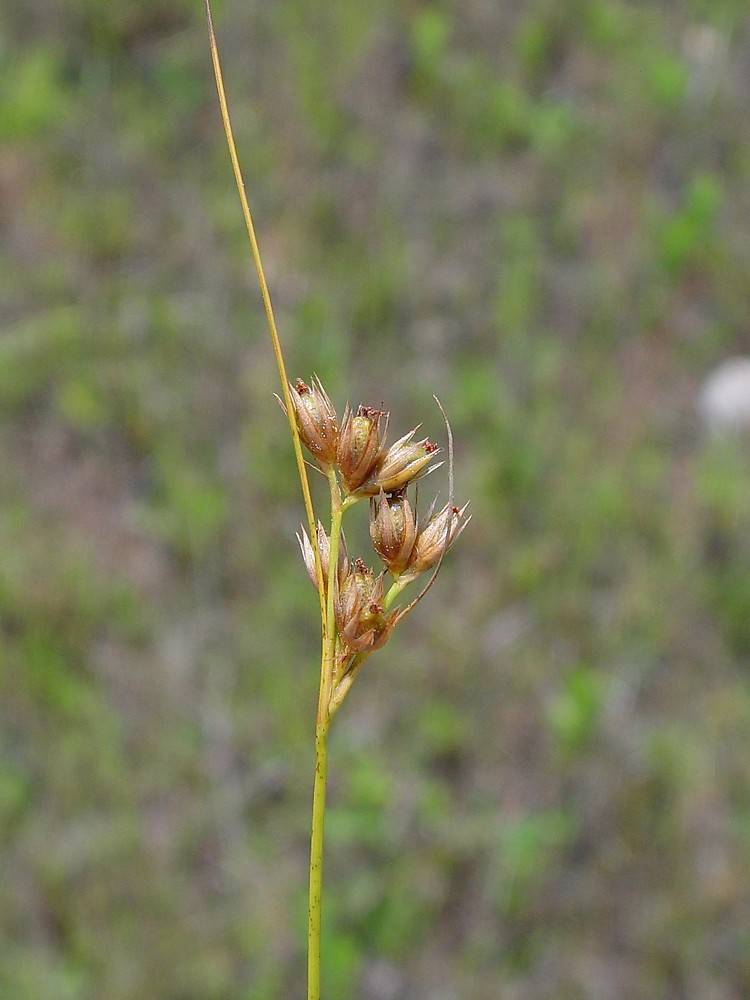
Juncus sp. – rush
Junc-aceae
Looks similar to grass or sedge, however flowers resemble a lily (3 sepals, 3 petals,3 or 6 stamens and a capsule), have a true perianth (֎6 tepals); no ligule at junction of blade and sheath like the grass leaf; diverse typically more common in wet habitats although some species in dry areas.
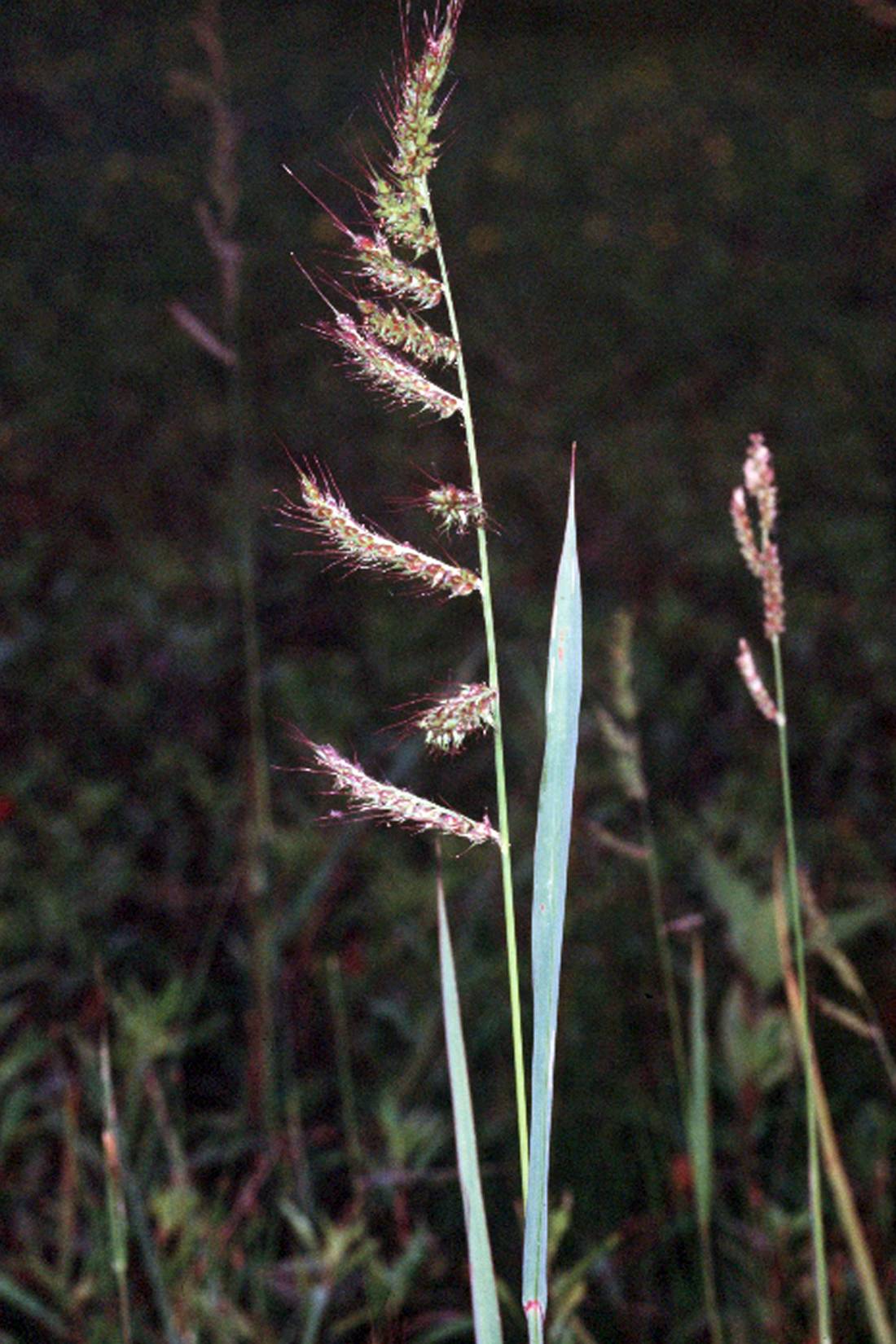
Echinochloa sp. - wild millet
Po-aceae
Medium grass 1-4’, mostly erect, smooth, branching at base; leaves both sheaths and blades smooth ֎spikeletes with small stiff bristles (sticks to your clothing); spikelets arising on ¾ of the stalk (֎flat on one side / planoconvex); marshes, wet meadow, waste grounds, floodplain.
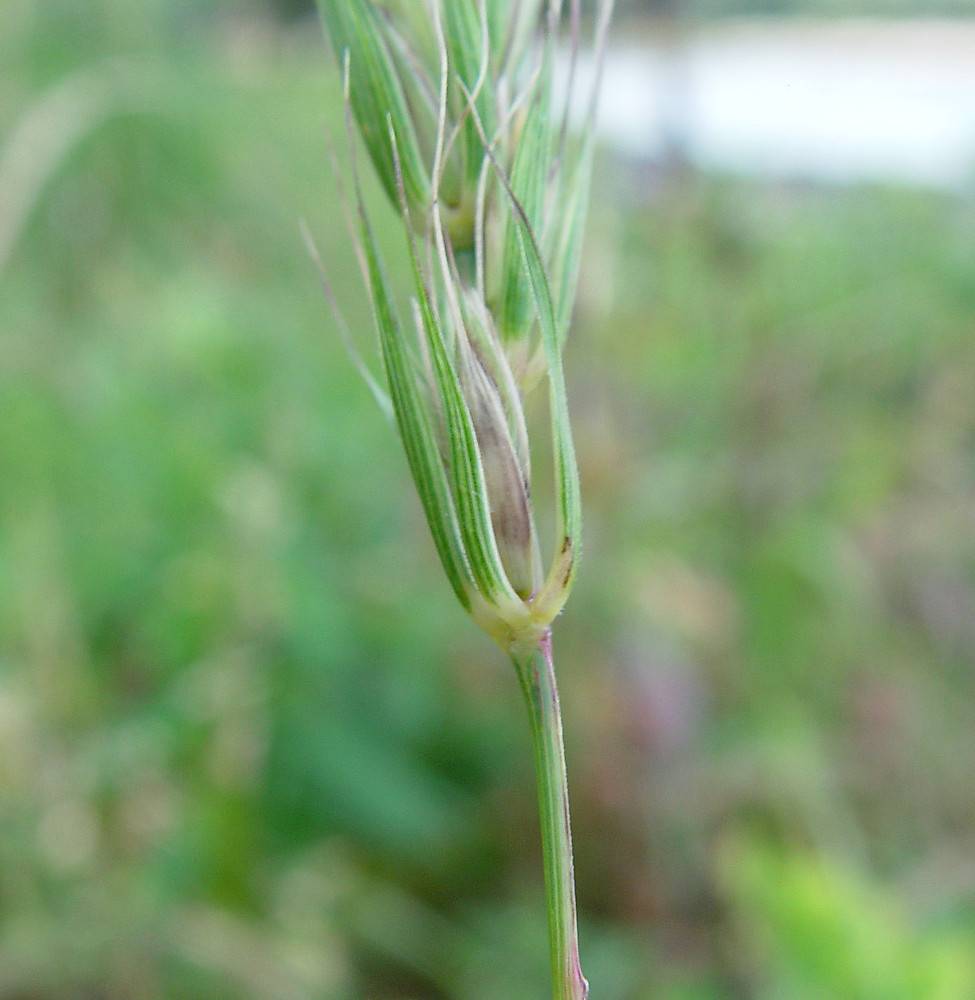
Elymus sp. - wildrye
Po-aceae
Medium grass; leaves flat with very short ligules; ֎spikelets paired at each spike node; head a densely flowered spike; glumes narrow and awn shaped; wet to moist areas.
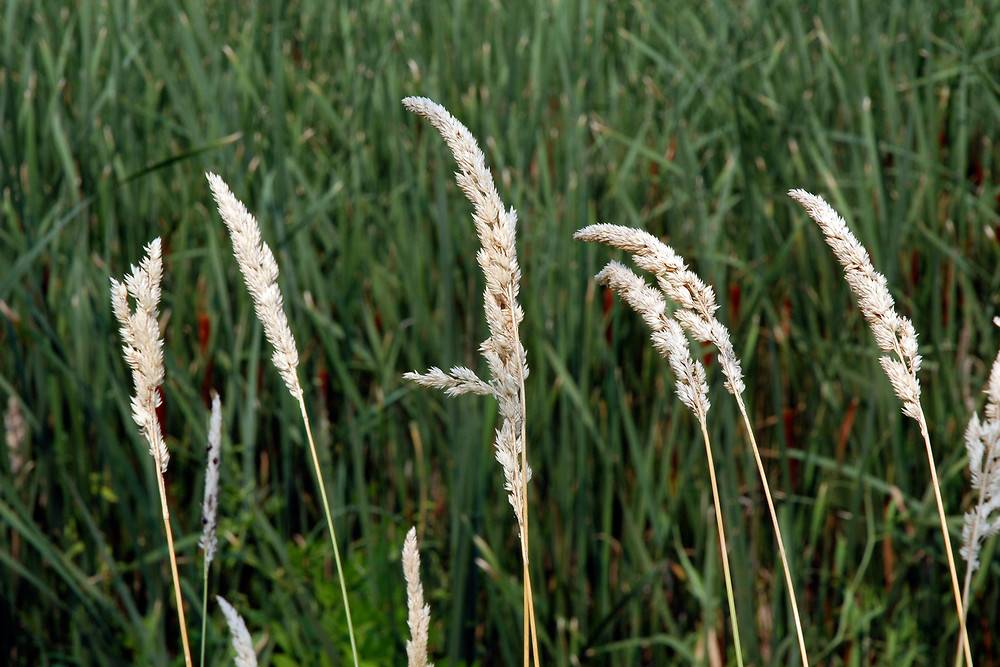
Phalaris arundinacea - reed canary grass
Po-aceae
Very common grass up to 1.5m; found in large clumps especially in drainage ditches; flowers in spikelets in club-like masses (֎compound spike), stamens and pistils borne in same spikelet without spines, not all on one side; shores, swales, wet meadows; lemma with 2 tufts of silky hairs at base; can be highly invasive.
|
Aquatic -herbaceous floating or submerged |
|---|
|
Dicot |
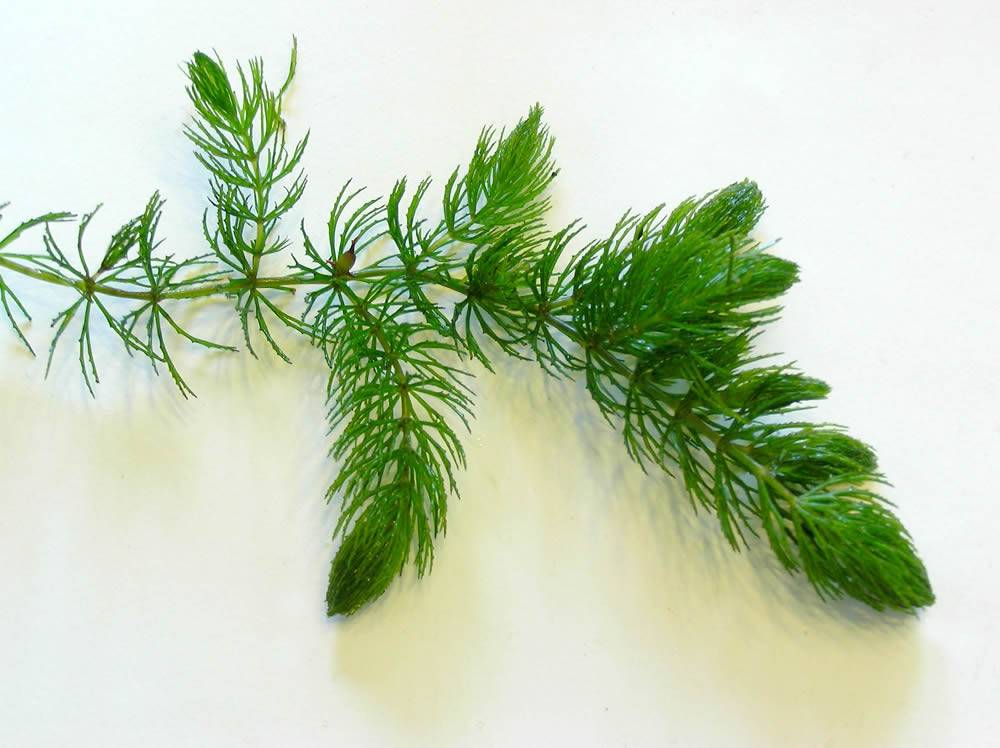
Ceratophyllum sp. – coontail
Ceratophyll-aceae
Exclusively submerged; leaves ֎whorled, ֎dichotomously forked with ֎spiny teeth along one side, more crowded toward the tip giving the “coontail” appearance; plants free floating, without roots; variable in length; ponds, shallow marshes. Weird fact: vascular plant with no vascular tissue.
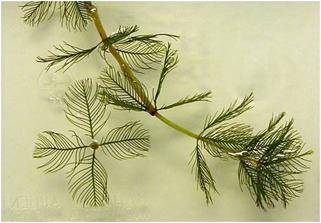
Myriophyllum sp. – water milfoil
Haloragid-aceae
Submerged herb (some species can grow out of the water); stems simple or branched, ֎submerged or sometimes floating or ascending; leaves variously arranged, usually ֎whorled and pinnately compound ֎ (feather like in appearance); inflorescence terminal or axillary; mostly submerged or seasonally terrestrial. There are several species in the region although most water ways are dominated by the invasive European milfoil (Myriophyllum spicatum); generally identification is difficult and sometimes impossible without genetic analysis due to hybrids, but if you find the emerged inflorescence, then this guide can help with identification.
Monocot (Aquatic -herbaceous floating or submerged)
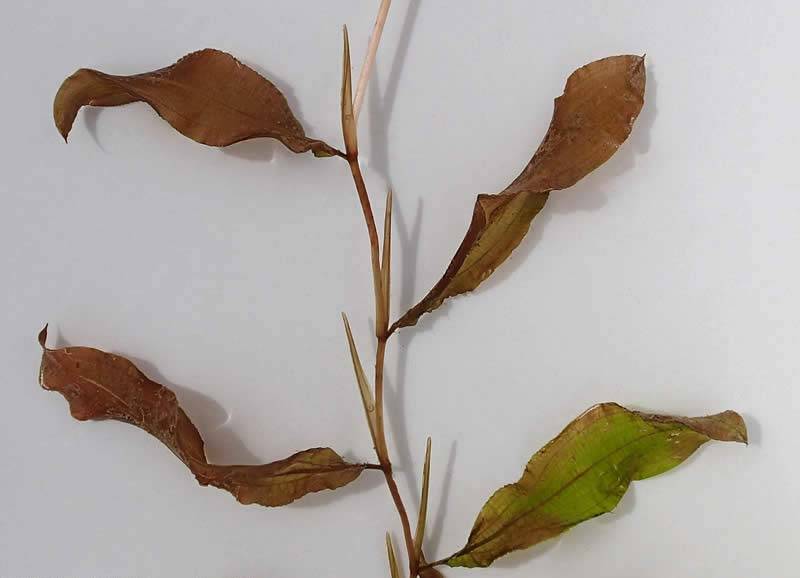
Potamogeton sp. - pondweed
Potamogeton-aceae
Submerged herb; leaves generally with pronounced ֎stipules (sometimes disintegrating), and a ֎strong mid-vein, often in two kinds ֎(firm floating or thin/membranous submersed); flowers borne in spikes ascending above the water surface for wind pollination, flowers in numerous pencil-like spikes, conspicuous in early to mid summer, retreating beneath the surface when the fruit matures. Identification is difficult; typically having more than one plant key helps tremendously and often fruit are necessary for confident identification.
|
Vine -herbaceous or woody |
|---|
|
Dicot |
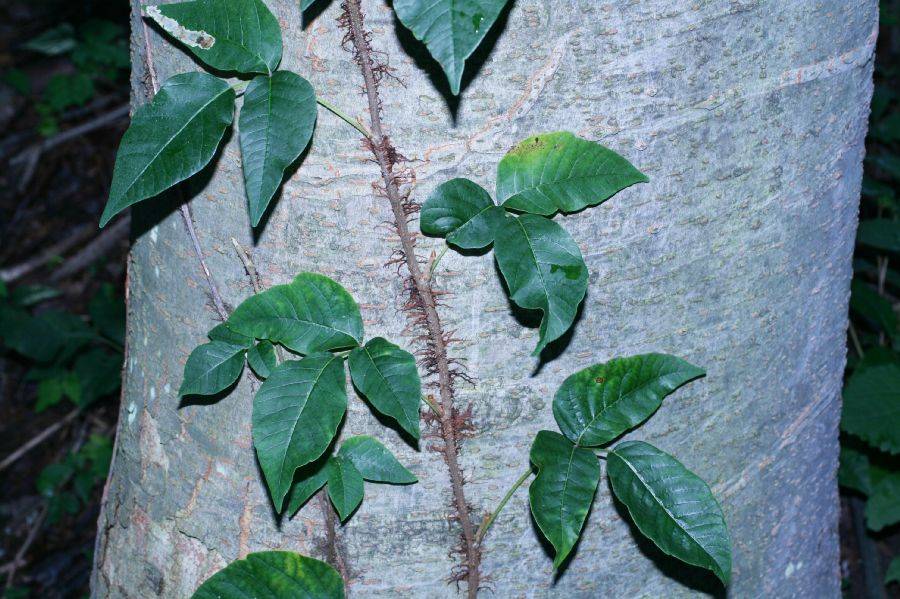
Toxicodendron radicans – poison ivy
Anacardi-aceae
Growth form variable: trailing or climbing vine, small shrub, ground cover; leaves ֎alternate, ֎irregularly serrate, ֎trifoliate, dull green, often w/ toothed leaflets, 4-14”; fruit is a cluster of white berries (drupe), Aug-Nov; vines with hair-like projections when growing on tree trunk.
Causes allergic reaction.
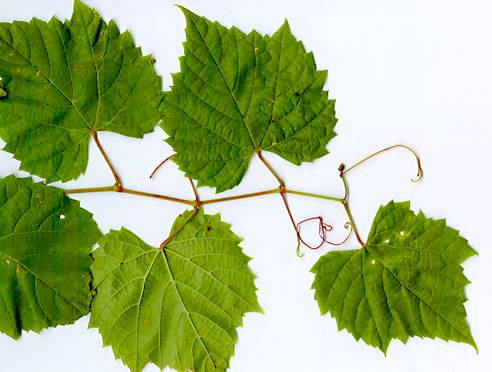
Vitis sp. - grape
Vit-aceae
Woody vine; ֎bark shredding and peeling, leaves alternate but often with a tendril opposite the leaf, with ֎grapes.
|
Shrub -woody |
|---|
|
Dicot |
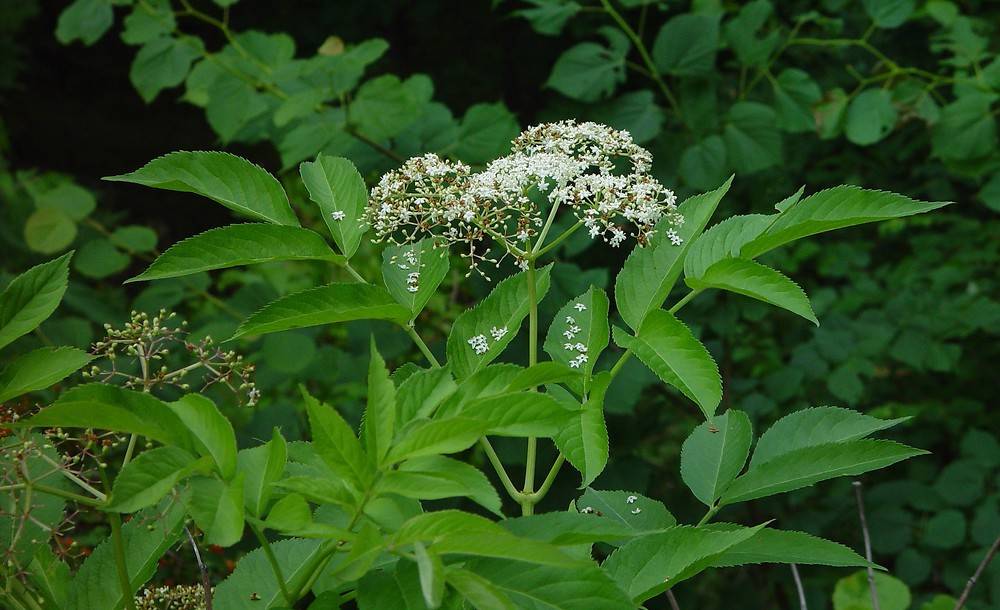
Sambucus sp. – elderberry
Caprifoli-aceae (֎paired flower moved to Adox-aceae)
Medium to large shrub or small tree to 3m, may from thickets; stems pithy with protruding wart-like lenticels; leaves large, ֎opposite, ֎pinnate divided into 5-11 leaflets; leaflets lancelate or oval in shape tapered to a sharp long tip, ֎sharply forward serrated; leaf base often asymmetrical; flowers small, white, perfect, 5-lobed in large clusters at edge of stem (flat-topped purple berry– S. canadensis; pyramidal red berry – S. racemose); fruit ֎berry-like drupe; July-August; most wet areas. Elderberry extract (Sambucol) is a commonly available flu remedy supported by scientific evidence.
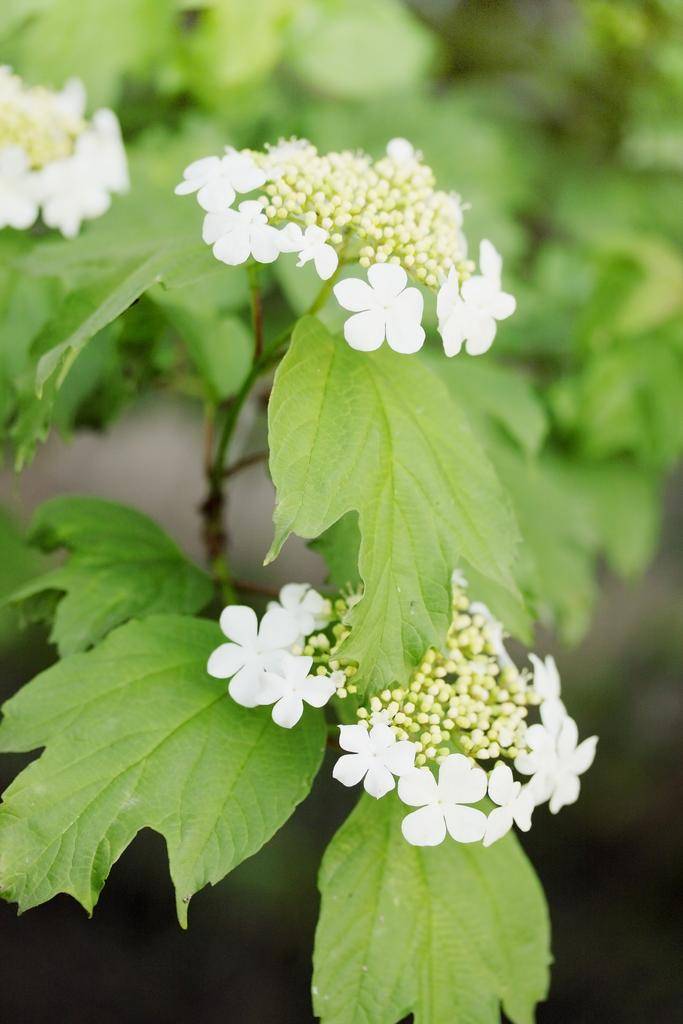
Viburnum sp. – viburnum
Caprifoli-aceae
Medium to tall shrub; ֎opposite leaves, simple; fruit a 1 seeded drupe, typically on a ֎corymb inflorescence. Commonly planted for their showy flowers, often edible berries, and fall colors.
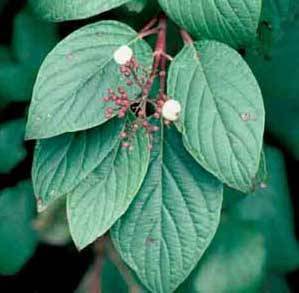
Cornus sp. – dogwood
Corn-aceae
Shrub or small tree; entire leaves usually opposite; ֎leaf veins follow the smooth leaf edges toward the tips; ֎silky sap apparent between veins when leaves are gently broken; twigs often reddish or purple; leaf buds with only 1 pair of scales; flowers 4 petaled with greatly reduced or no calyx, some species with showy bracts; typically very hard wood.
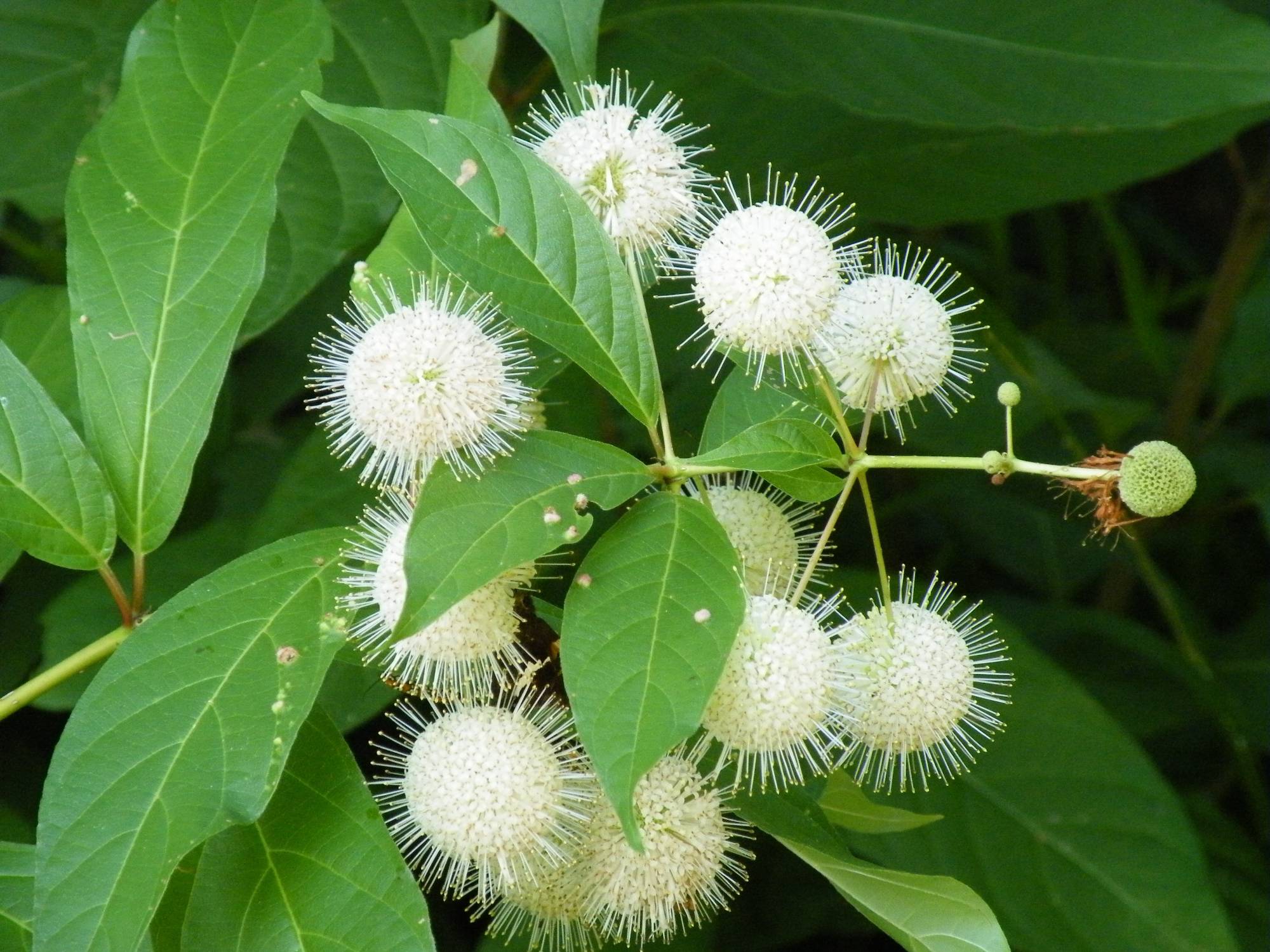
Cephalanthus occidentalis - buttonbush
Rubi-aceae
Medium shrub; ֎leaves opposite or whorls of 3, 2-3” long, waxy and thick, elliptic, sharp pointed; flowers in ֎spherical ball-like heads at the end of a long stalk in the axils of the upper leaves, whitish in color; shallow marshes and ponds, scrub/shrub, floodplains along streams.
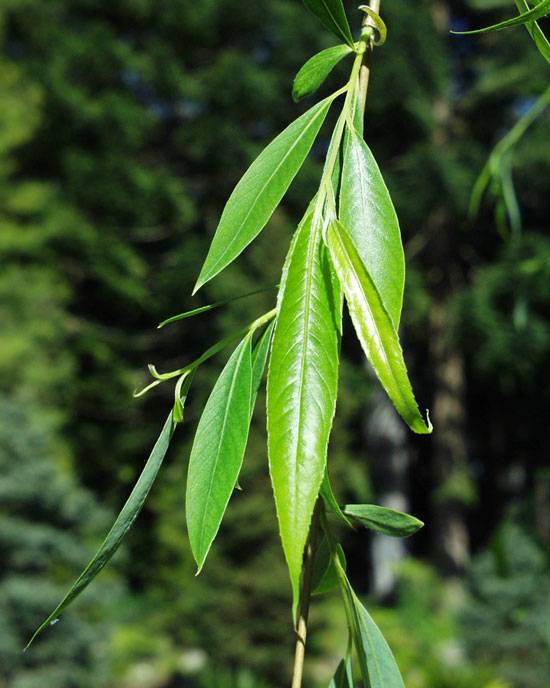
Salix sp. - willow
Salic-aceae
Shurbs and trees; often difficult to identify to species; ֎leaves alternate, usually lanceolate, ֎typically long and narrow; ֎flowers arranged in catkins; characteristic of stream-banks and moist conditions, floodplains, pond edges, shores; young branches commonly fall and make new individuals. Salicylic acid (aspirin) in the bark of nearly all species throughout the world, you can chew on a young twig (eating large dry bark is undesirable and less effective).
|
Tree -woody |
|---|
|
Dicot |
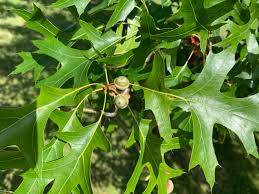
Quercus palustrus – pin oak
Fag-aceae
Medium tree up to 25m; leaves alternate, simple, divided more than halfway to middle into 5-7 ֎bristle-tipped lobes, to 15 cm long and 10 cm wide; light or dark brown bark with red-brown to gray twigs; branches with many short side-branches (pen sized); buds clustered at branch tips; male flowers in catkins female flowers in groups of 1-3; fruit an acorn in groups of 1-4; acorns maturing in the second year, woolly on the inner surface of the shell, round, 3/8” to 1/2” across, with saucer-like cups covering less than 1/3 of the nut; floodplain forests, swamps, and low woods. The term pin oaks typically refers to the pin-like branchlets that project from the trunk and large lower branches.
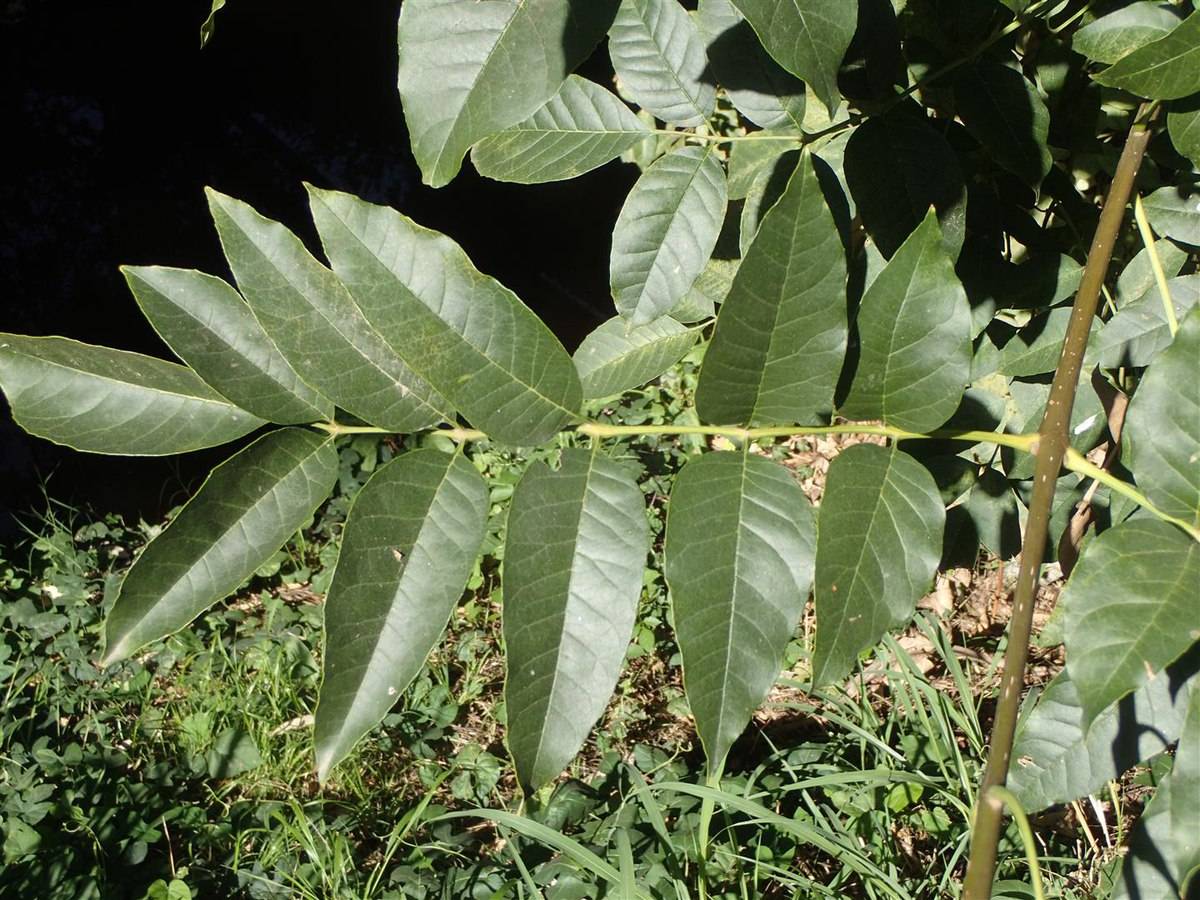
Fraxinus sp. - ash
Ole-aceae
Tree; leaves compound ֎opposite, ֎5-9 leaflets, short stalked, toothed or not, 10”-12”; twigs hairless, mostly shiny; flowers in April; fruits wedge-shaped; lowlands, floodplains, moist woods.
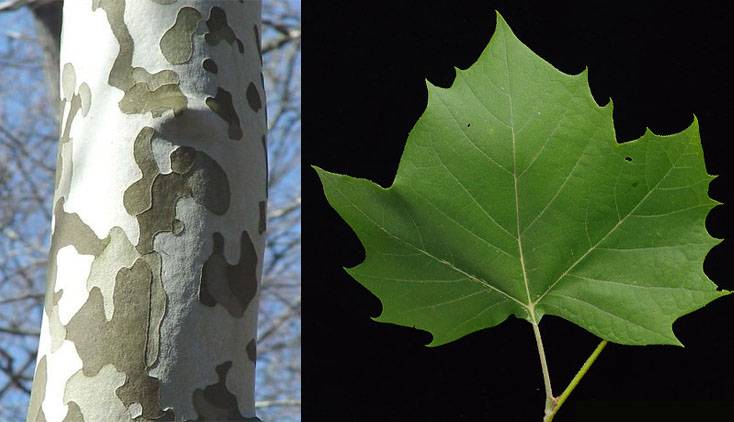
Platanus (occidentalis) - sycamore
Platan-aceae
Large tree 50-130’; ֎bark mottled like camouflage green-white-brown-grey, flakes off in a jigsaw-like puzzle; leaves alternate, ֎3-5 lobed (similar in appearance to a maple), ֎very large 6”-10”, edged w/ sharp teeth; leafstalk bases hollow, encircle buds; flowers small in globose heads in April; fruits small, hairy, in tight brown long-stalked hanging balls; floodplains, wet soil.
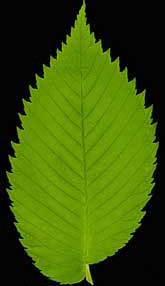
Ulmus americana - American elm
Ulm-aceae
Large tree 80-100’; outer bark consists of alternating pale white and dark brown layers like a sandwich; twigs hairless; leaves ֎doubly serrate ֎alternate, sand papery or smooth or variable, ֎oblique at base, 2-6” long; buds over a 1/4”, light brown w/ dark edge scales; fruit a samara; swamp forests, floodplains, wet bogs, and upland as well.
